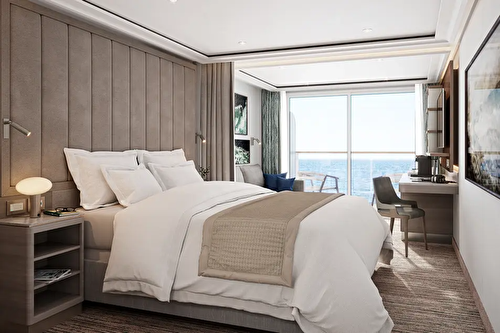Barcelona to Monte Carlo
- 6 Sep ‘26
- 11 nights
- Departing from Barcelona
- Silver Ray
-
Inside price fromCall for price
-
Outside price fromCall for price
-
Balcony price fromCall for price
-
Suite price from$16,900*/pp
YOUR ITINERARY
Barcelona, Spain - Malaga, Spain - Malaga, Spain - Cartagena, Spain - Alicante, Spain - Valencia, Spain - Palma De Mallorca, Spain - Palma De Mallorca, Spain - Palamos - Monte Carlo, Monaco
























The infinite variety of street life, the nooks and crann...
Situated on Spain’s Costa del Sol, Malaga is the r...
Situated on Spain’s Costa del Sol, Malaga is th...
On the crossroads of mighty cultures, this Murcian port has endl...
The bustling resort of Alicante serves not only as the port for ...
Valencia is Spain’s third largest city and capital ...
The Balearics are comprised of 16 islands; the thr...
The Balearics are comprised of 16 islands; the three ...
The independent principality of Monaco is famous as the play...
YOUR SHIP - The Silver Ray
Silversea’s second Nova Class ship arrived in summer 2024 and promises guests seamless destination connection. Silver Ray mirrors every aspect of her sister ship, Silver Nova, including a pioneering, asymmetrical design and extraordinary use of glass in both public areas and in suite for uninterrupted views wherever you are! What’s more, Silver Ray is one of the most spacious ships ever built, offering an exceptionally high space-to-guest ratio yet remaining nimble enough to offer purity in movement, as her name suggests. She is truly a ray of light.
Description
Silversea’s second Nova Class ship arrived in summer 2024 and promises guests seamless destination connection. Silver Ray mirrors every aspect of her sister ship, Silver Nova, including a pioneering, asymmetrical design and extraordinary use of glass in both public areas and in suite for uninterrupted views wherever you are! What’s more, Silver Ray is one of the most spacious ships ever built, offering an exceptionally high space-to-guest ratio yet remaining nimble enough to offer purity in movement, as her name suggests. She is truly a ray of light.


